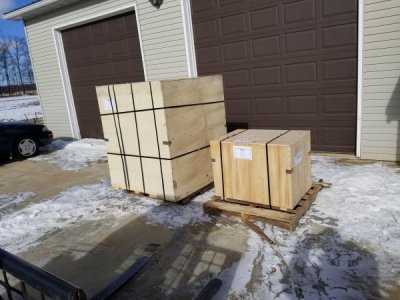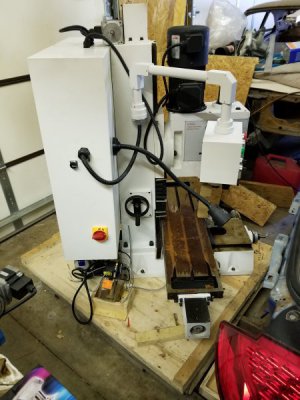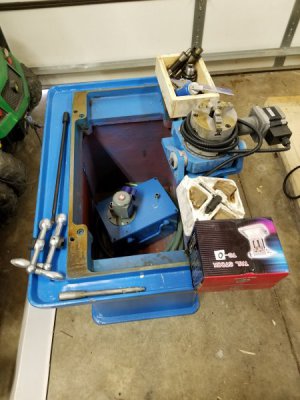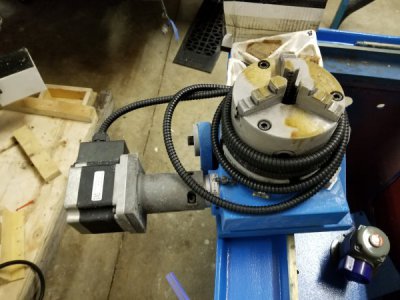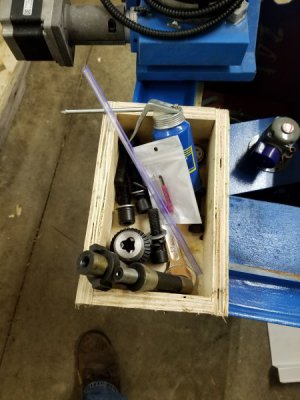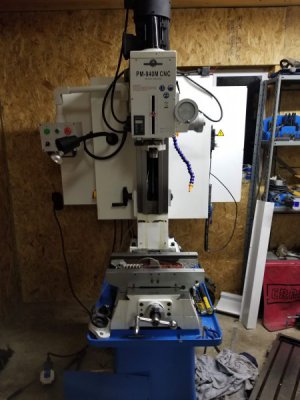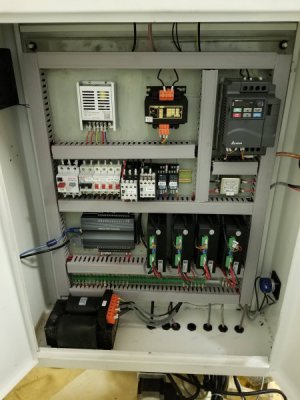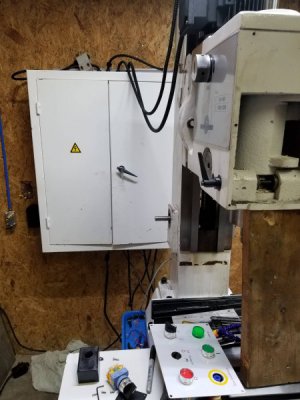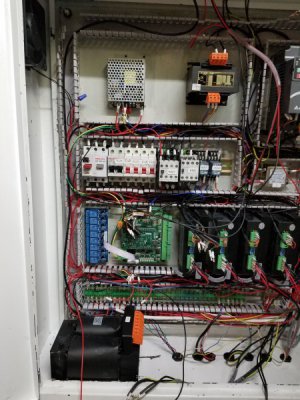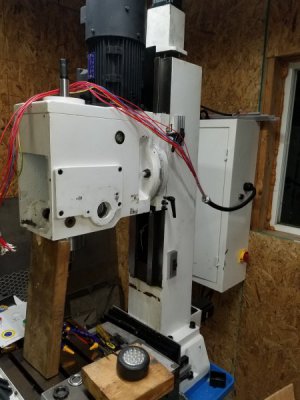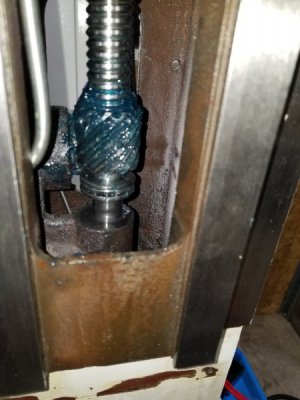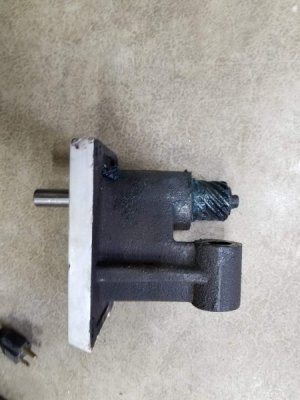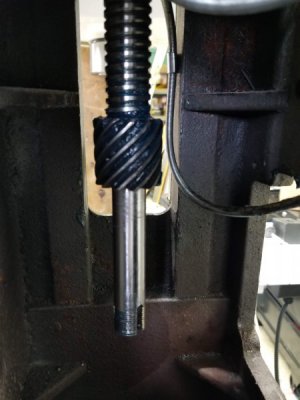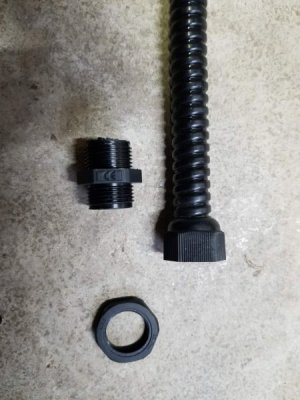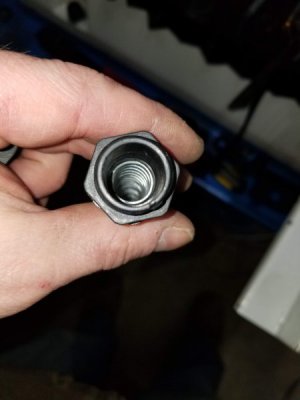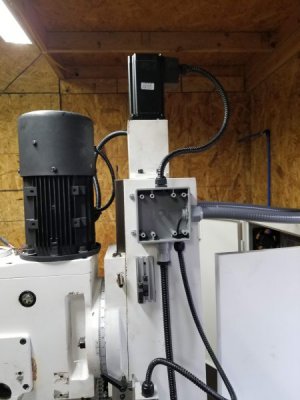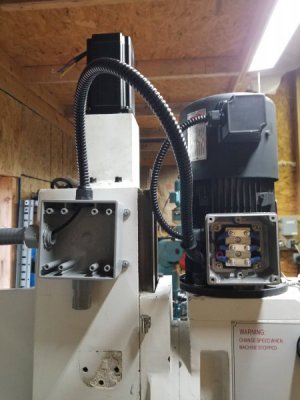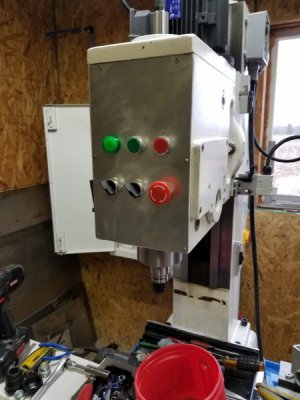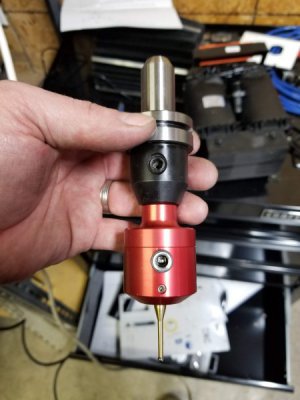Hi guys,
It is nice to hear from folks who bought the same machine as I. I finally have had my machine up and running now for about a year, but given that this is the first mill I have ever used and I have been kind or busy with other stuff I am still learning my way. It would be nice to hear from you about the performance of the machine so that I can determine if mine can do better or not. Without other experience, I really do not know good from bad. I do think the machine is pretty accurate with limited run-out and backlash.
Fritts, your machine via your pictures looks just like mine except for the electronics layout and maybe the interface box between the nmotion controller and the stepper drivers. My electronics are probably more like Phasertwo's and he noted the layout difference. I have not changed my machine at all, still using the nmotion and the original steppers, however, I have often wondered if the mill would run more smoothly with a different set of control electronics. Anyway, I wanted to give the nmotion etc a chance before I make that drastic a change. I have attached three photos. 1) still ion the shipping pallet. 2) Inside the electronics box. 3) After mounting the stand on a dolly, moving the electronics box to the right side (considerable effort, but nice to have), and full install into my basement(I had to bring it through the basement door in pieces and reassemble after in place). I noted that they moved the transformer to the bottom in your electronics and so took it off the heavy back plate.
I used the mill will still on the pallet to drill the many holes I put in the steel plates I use to make the dolly. It seemed to worked fine, but I noted that if I lost power or turn off the machine without locking the vertical clamps the head would slowly sink and crash the tool into the work. I was pretty disappointed that the z-stepper would not hold the weight. I then measured the repeatability and found that the stepper was slipping all of the time. I just ran it up and down an inch several times and then measured to see if it came back to where it started. It was way off. Since that time I have measured that head weight, including a chuck and gear oil to be at about 240 to 280 pounds. That is a lot for the little stepper, however, when I lifted the mill I found the lock washers and nut for the vertical lead screw to be laying under the mill on the pallet. I also found the the vertical manual crank and gear rattles a lot when the stepper is driving vertically up or down. After I had the electronics box removed I could put the lock washer and lock nut back on the lead screw/bearing and this plus adjusting the way friction I managed to get the z-axis stepper to hold just fine. Vertical repeatability with or without powering down is about 0.001 or better (my measurement accuracy). Clearly, though the head stock is just too heavy and so will probably cause way wear. I have thought about counter balancing it with a weight or spring off the back, but since it all works ok I have not done so. Having the electronics box on the side provides nicer access to the back of the vertical post, better access to the electronics and now I can push the mill closer to the wall. However, I had to reroute the wires out the cabinet which required some new holes. Anyway, I had to take the electrical box off the back and the x-axis table off to get the machine through my doorway(s) so I could get at the lead screw from the back to put the washer and nut back on and properly adjusted.
There is another forum discussion about this z-axis nut falling off so mine was not the only 940M where this happened. You can see this nut from the bottom of the mill if you want to pick it up and look up.... with a mirror. Otherwise, take off the electrical box and you will have an access hole in the vertical post. By the way, the loaded electrical box is heavy too! I could not pick it up by myself and it was load for two. In addition, to the heavy transformers there is a thick steel plate at the back that everything is bolted to.
I also find that there is some electrical surge when powering up and so on occasion the stepper breaker throws, but this is only after it has been powered down for along time. I have not figured this one out yet, but it is only a minor nuisance.
The worst think about mounting the cabinet on the right side of the mill head post is that the left cabinet door now bangs into parts of the mill when opened. I have a fix for that, but it is not high enough on the list.
Because I was such a newbie I had assumed that with the variable speed motor I would be all set to do power tapping. How little I knew! I have a tack so I measured the spindle speed vs what is programmed. It is only about 90% accurate. Also, the motor/electronics has a lot of inertia/delay and so does not start turning immediately when a command is issued. Not good for power tapping. So I keep thinking about attaching my forth axis stepper via timing drive belt directly to the spindle (at the spline) and fixing it so that when I want to do tapping I can just use it as the spindle drive. It turns out that when you switch between the low and high speed gears there is enough room between the gears that for a short distance the spindle is free. The normal drive motor does not engage to the spindle. Hence, I think that one could connect a stepper directly to the spline shaft and get good enough speed control to do power tapping. Maybe...!
Lastly, if you do not have a spline wrench you will want to get one. I had no way hold the spindle from turning when changing tools. I live in Pittsburgh, and so I went back to Precision Matthews and they happened to have one that Matt let me have. You can see it, a little, in my photo. It is laying in the stand tray on the left hand side.
By the way, if you would like to share contact info I am willing.
Dave.
